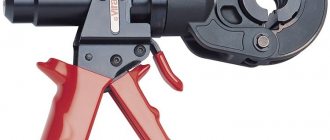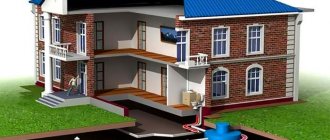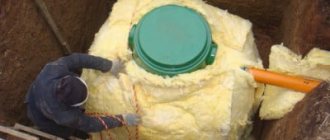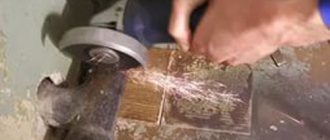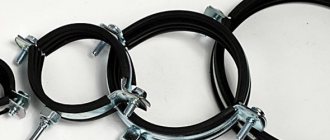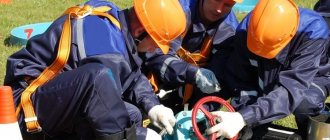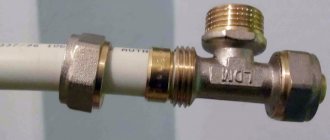Sometimes it becomes necessary to connect an additional plumbing fixture to an already operating sewer system. For example, when purchasing a washing machine or dishwasher, in order to connect it you will need to make a connection into the sewer pipe.
For a professional plumber, such work is not difficult. But for a person who does not have experience, it is necessary to study the rules and methods of connection so as not to disrupt the operation of the system.
Reasons for the tie-in
There can be many reasons for crashing into a sewer. Here are just some of them:
- Connecting a new plumbing fixture.
- Transfer of devices to a new location, in case of redevelopment, etc.
- Connecting the house to the central sewer system.
In the first option, there is a connection to the in-house system, so there should be no complications as such. In the second case, if there is a need to cut into the central riser of an apartment building, there is a risk of being flooded with drains from the upper floors. Therefore, it is better to agree in advance with neighbors about the time of work and limiting the use of sewerage.
When connecting a house to a centralized sewer system, it is necessary to negotiate with utility services so that the water supply is shut off at a certain time. In this case, housing and communal services have the right to issue you an invoice for certain work.
Video: How to install a tee into a sewer riser
How to install a tee on a PVC sewer pipe
PVC tees for sewer pipes can be used for both internal and external sewerage.
You can consider how to install a tee on a sewer pipe using the example of connecting a sink and toilet:
- first of all, you need to place the toilet in its designated place in the toilet and mark the place where you plan to install the tee;
- then the toilet needs to be removed from its future location or simply put aside;
- using sealant, the tee should be inserted into the socket of the riser;
An example of installing a tee for connecting to a toilet
This is how sealant is applied to connect a toilet
This is what a toilet connected to a corrugated tee looks like
For example, if you need to make only one branch from a water pipe, then using a regular tee will be the most optimal and convenient option.
If the plumbing system consists of metal pipes, then you will need to find their connections and unscrew them.
So, installing a tee on a water supply pipe is carried out as follows:
Using sewer pipe tees
- first you need to turn off the water along the riser and, of course, warn your neighbors that you will be carrying out repair work that requires turning off the water;
- then you need to find the pipe connection where you want to actually install the tee and make a branch;
- the connection point should be unscrewed, and this is where the tee should be inserted;
- to do this, you will need to move the pipes apart somewhat and, perhaps, even one pipe will have to be shortened and a thread cut into it;
- After this, you can safely install the tee and it is better to coat the joints with sealant in order to avoid water leakage. However, if you do everything correctly, select the appropriate type of tee to match the size of the water pipes, then the connections themselves should be sealed and should not leak.
This is what the installation of PVC tees looks like
As you can see, installing a tee is not an impossible task, and every owner can cope with it, even without any knowledge and skills.
In addition, installation of a tee does not require the use of any equipment, such as welding, and installation lasts a matter of minutes.
Methods of inserting into the system
There are several ways to cut into a sewer pipe; the choice depends on the material and diameter of the pipes, the location and method of their location. In order to cut a pipe of a smaller diameter into a larger one, a special adapter is used, and if the diameters are equal, a tee or cross is installed.
Installing the adapter
This method is suitable for both plastic and cast iron pipes. The work is performed in the following sequence:
- A hole ∅ 50 mm is made in the pipe. This can be done with a drill and a special bit, but for cast iron you may have to use a cutting torch.
- The edges of the hole are cleaned of burrs using a file or sandpaper.
- The adapter installation location is lubricated with sealant.
- The adapter is installed and secured with clamps and bolts.
Tapping with a tee
When tapping into a cast iron pipe, you need to cut a part of it exactly to the size of the tee. After this, the connection is welded; it is better to trust such work to an experienced welder. It is much easier to cut a tee into a plastic pipe and you can do it yourself.
To do this, part of the pipeline is replaced with two short sections, between which a tee or pipe with a pipe of the required diameter is installed. The only difficulty may arise when connecting the sockets.
What types of tees are there?
The sewer tee is a very important element that ensures the branching of the pipeline.
Today there are several types of connecting tees:
- PVC tees are straight, designed for sewer pipes at 90/87 degrees. This type of tee is used to connect vertical risers to the horizontal part of the sewer system;
PVC Straight Tee
45 degree tee
This is what an inspection tee with a coupling and cover looks like
The most modern and convenient are plastic devices for branching the pipeline system.
In addition, replacing a plastic tee is much easier, since it can be done without the use of improvised tools, and this greatly simplifies the repair process.
The main advantages of plastic tees include:
Tee for plastic pipes
- durability;
- ease of installation;
- affordable price;
- reliability of the design.
Thanks to this type of fitting, it is possible to connect pipes and make a branching of the pipeline, which will ensure the unhindered flow of wastewater into different parts of the sewer system.
Routing pipes using a plastic tee
Insertion into a plastic pipe
Work process:
- We take a piece of pipe with a pipe of the required diameter.
- We prepare the workpiece - we cut out the pipe and part of the pipe so that it reliably covers the insertion point (you can simply cut it lengthwise).
- In the pipe into which we are cutting, we drill a hole, the diameter of which coincides with the pipe.
- Apply sealant to the inner surface of the workpiece and the pipe.
- We apply the workpiece and tighten it with clamps until the sealant appears.
This method can be used for both plastic pipes and any others.
Insertion into a vertical riser
When tapping into a riser, the first thing you need to do is negotiate with your neighbors so that they do not drain the water for some time. All subsequent work must be completed as quickly as possible.
For the riser, the best option would be to use a plastic oblique tee. This will make it easier to clear the blockage in the future. Such a tee is available for plastic and cast iron pipes; the direction of the pipe should be against the flow of wastewater.
Stages of work:
- Marking - the length of the cut section must be equal to the height of the compensator;
- We cut out a section of pipe - plastic can be sawed with a hacksaw, cast iron with a grinder.
- Cleaning the cut from burrs and rust.
- The joints are lubricated with soapy water or cream.
- A compensator is put on the top, a coupling on the bottom (if necessary), then a tee or cross;
- The compensator settles into the tee;
- The joints of plastic pipes are coated with sealant, while cast iron pipes are sealed with caulking or cement (without sand) mortar.
You might be interested in this:
Replacing sewerage in an apartment
Sewerage installation in a private house
Check valve for sewerage
Fan pipe for sewerage
Internal sewerage in a private house
Tees for sewer pipes: types and installation instructions
Today it is impossible to imagine comfort and convenience in a private home without a sewer system. Of course, in order to install a sewerage system in a private house, you will need many details, among which tees for sewer pipes occupy a special place.
They are special devices used to create certain branches in the pipeline system in a private house, cottage, apartment or any administrative buildings.
These created branches facilitate the transportation of wastewater or fecal matter. The parts themselves have a bell-shaped design, which, in fact, ensures ease and simplicity of connections with plastic pipes, or with each other.
They can have a right angle, or they can have an angle of 45 degrees. As a rule, tees have a service life of 50 years and provide ultra-reliable installation.
The content of the article:
This is what a tee for sewer pipes looks like
